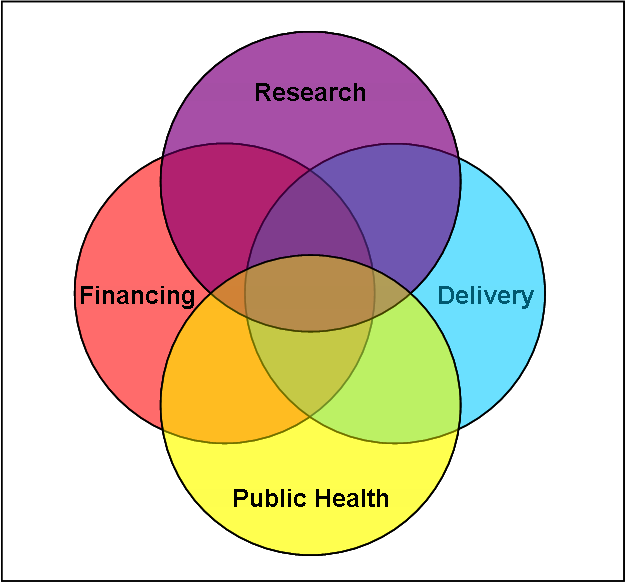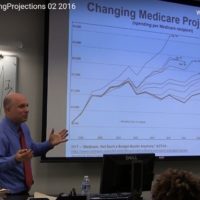Many people and pundits have opined on the effects that the economic downturn will have for the likelihood of health reform: On the Federal level, how much money will be available for expanding insurance coverage, and how much money will be included in the “stimulus package” – and for what? And in the States, how much will be cut from Medicaid programs and government employees’ benefits? In addition, there have been news stories about the economic downturn leading to loss of insurance coverage secondary to job-loss, as well as people forgoing direct medical care, healthy activities, and wellness behaviors.
These points illustrate how the multiple parts of our health care “system” interconnect, (particularly financing effecting delivery), and everything existing within the overall economic environment. [The economy’s effect on healthcare could be similar to how the percentage of oxygen in the earth’s atmosphere effected the development of different plants and animals in different eons.]
While the connection between healthcare delivery and financing is easy to see, research and public health are two additional – and important – spheres that make up our overall healthcare system:
As can be seen in the graphic above, each of the four spheres in our healthcare system interact with the others. While it is obvious that delivery and financing are closely linked, it needs to be remembered that R&D and public health are activities that lead to better quality care, while also being tied to healthcare financing and delivery.
Implications for Health Reform Strategies
These relationships have implications for broad health reform strategies because making changes in one sphere will have effects in the others. For example, not only will expanding insurance coverage for one part of the population – such as children – be a good thing for children, but it will also affect research and development and public health activities related to children. For example, greater insurance coverage can increase incentives for more R&D into vaccines and for their use. But lower payment rates for clinicians to actually provide vaccinations (or higher insurance co-payments) can decrease those incentives. Thus the overall outcome depends upon the balance of effects among the difference spheres.
Resource Limitations
It should also be recognized that resources are limited – both money and people. So, for example, if a big push is made for information technology in healthcare, that will consume money and people, (administrators, researchers, clinicians and policy makers), so that there will be less resources for other areas.
My point is not to say that one issue or problem is more important than the others, but to put some structure around the concept that every action causes other reactions that can be either good or bad, and those possibilities need to be considered in analyzing proposals.
Since most proposals call for relatively small changes, it can also be illuminating to dramatically expand one’s viewpoint. For example, in exploring how to control healthcare spending, the extreme answer to the question, “What is the cheapest way to provide healthcare?” is “Provide no healthcare.” But obviously squeezing both financing and delivery to zero would also have significant undesired consequences in public health (and research), which would certainly not be good for workers’ productivity or the overall economy. Obviously this is one of many examples of the old expression, (and storyline for millennia of parables), “Be careful what you ask for, you may get it. Let’s hope that the consequences of this obvious and old axiom are one of the guiding principles for health reform.



[…] I’ve written before, healthcare delivery and financing are closely interconnected, and making changes in one can have […]
[…] shouldn’t be a tolerated part of the structure of our biomedical research system – which, as I’ve previously discussed, is one of the four spheres comprising our entire healthcare […]